Lesson 2
Naming the Moves
Lesson Narrative
In this lesson, students begin to describe a given translation, rotation, or reflection with greater precision and are introduced to the terms translation, rotation, and reflection. The collective terms “transformation” and “rigid transformation” are not used until later lessons. Students are introduced to the terms clockwise and counterclockwise. Students then use this language to identify the individual moves on various figures.
Students engage in MP6 as they experiment with ways to describe moves precisely enough for another to understand their meaning.
Learning Goals
Teacher Facing
- Describe (orally and in writing) the movement of shapes informally and formally using the terms “clockwise,” “counterclockwise,” “translations,” “rotations,” and “reflections” of figures.
Student Facing
Let’s be more precise about describing moves of figures in the plane.
Required Materials
Required Preparation
Print and cut up cards from the Translations, Rotations, and Reflections blackline master. Prepare 1 copy for every 3 students.
Make sure students have access to items in their geometry toolkits: tracing paper, graph paper, colored pencils, scissors, ruler, protractor, and an index card to use as a straightedge or to mark right angles.
Access to tracing paper is particularly important. Each student will need about 10 small sheets of tracing paper (commercially available “patty paper” is ideal). If using large sheets of tracing paper, such as 8.5 inches by 11 inches, cut each sheet into fourths.
Learning Targets
Student Facing
- I can identify corresponding points before and after a transformation.
- I know the difference between translations, rotations, and reflections.
Glossary Entries
-
clockwise
Clockwise means to turn in the same direction as the hands of a clock. The top turns to the right. This diagram shows Figure A turned clockwise to make Figure B.
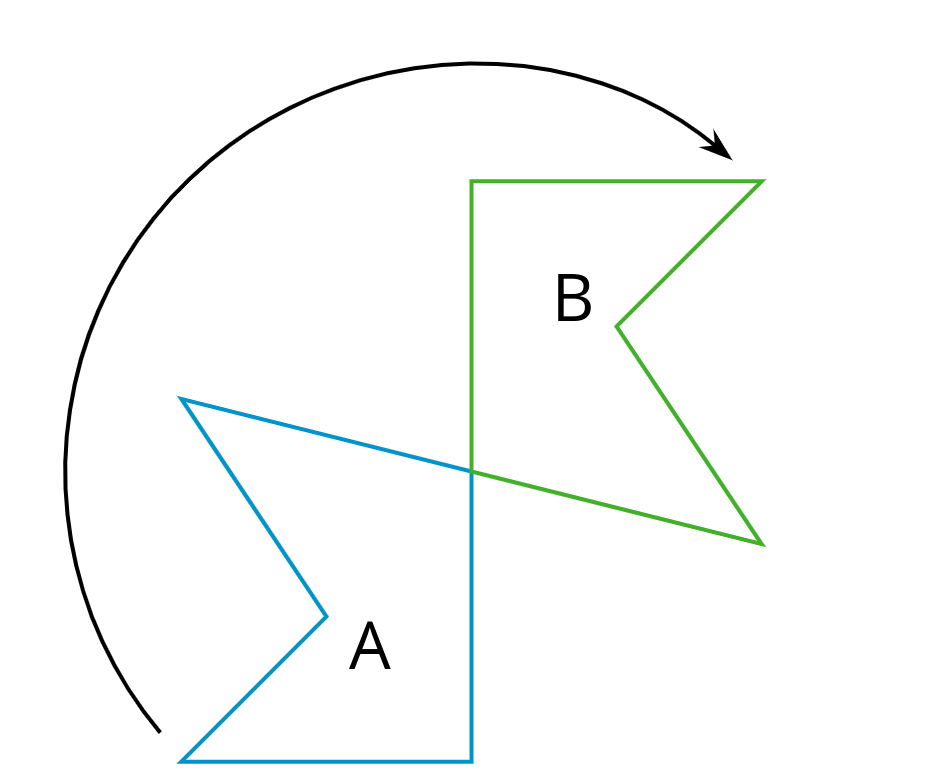
-
counterclockwise
Counterclockwise means to turn opposite of the way the hands of a clock turn. The top turns to the left.
This diagram shows Figure A turned counterclockwise to make Figure B.
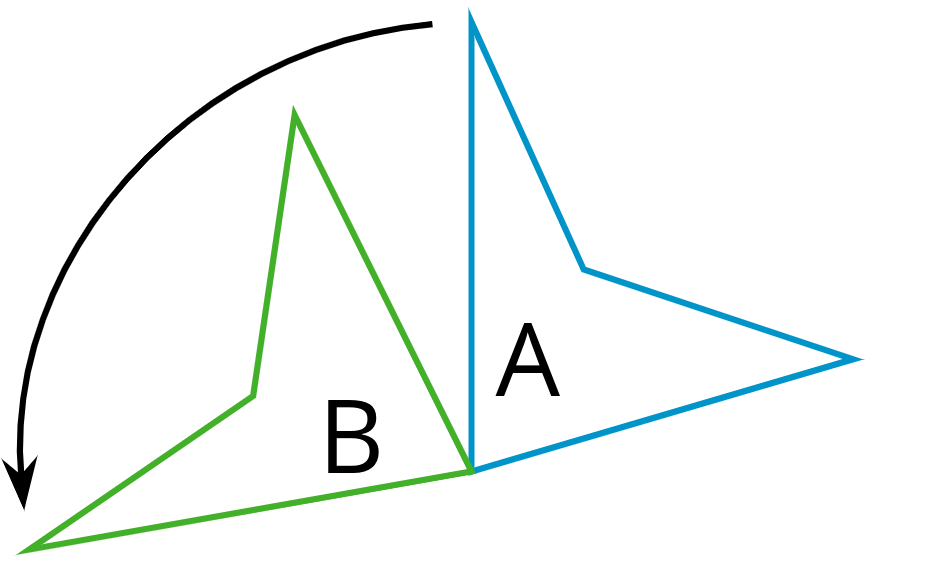
-
reflection
A reflection across a line moves every point on a figure to a point directly on the opposite side of the line. The new point is the same distance from the line as it was in the original figure.
This diagram shows a reflection of A over line \(\ell\) that makes the mirror image B.
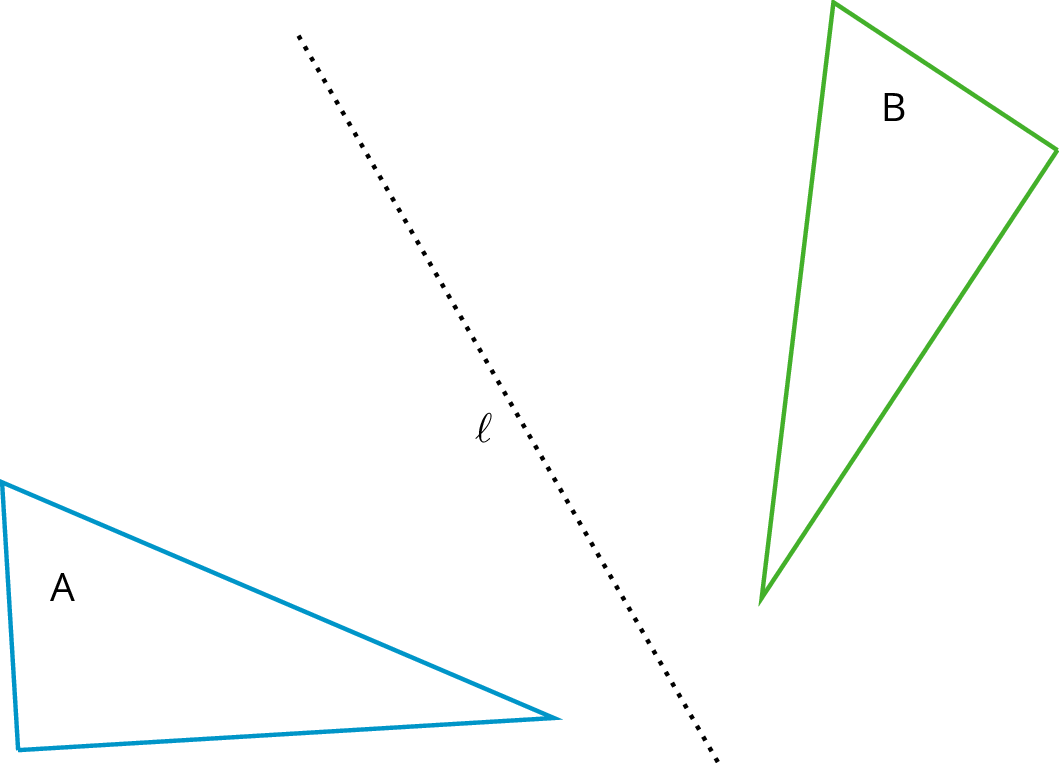
-
rotation
A rotation moves every point on a figure around a center by a given angle in a specific direction.
This diagram shows Triangle A rotated around center \(O\) by 55 degrees clockwise to get Triangle B.
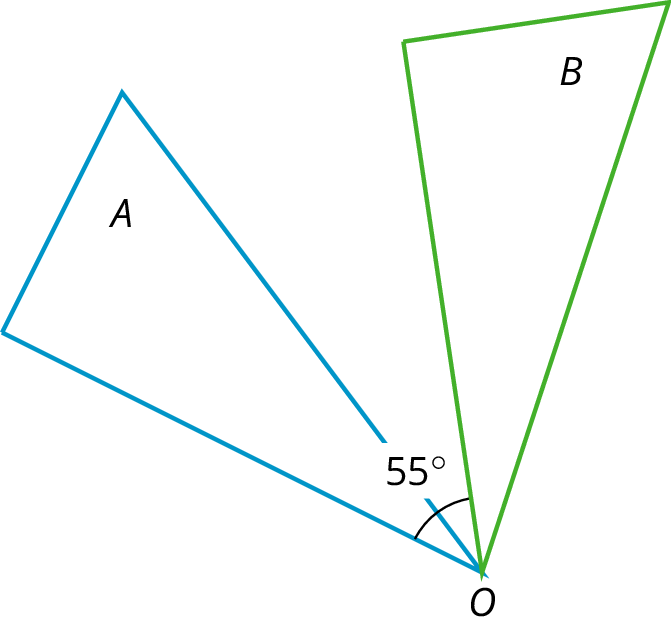
-
translation
A translation moves every point in a figure a given distance in a given direction.
This diagram shows a translation of Figure A to Figure B using the direction and distance given by the arrow.
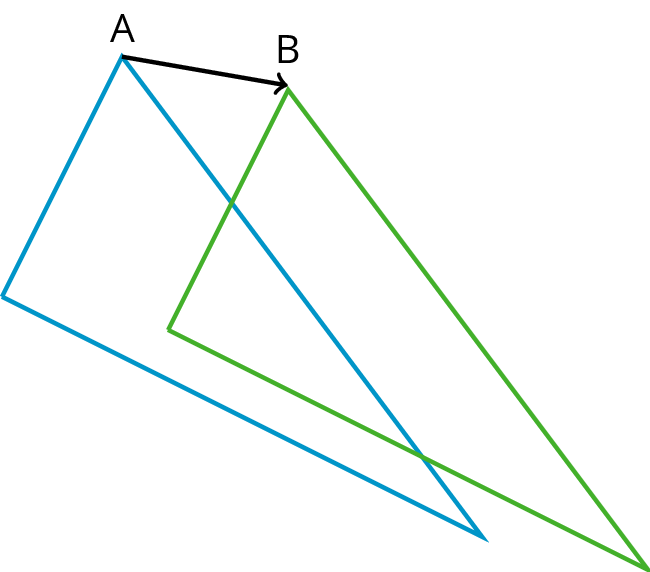
Print Formatted Materials
For access, consult one of our IM Certified Partners.
Additional Resources
| Google Slides | For access, consult one of our IM Certified Partners. |
|
| PowerPoint Slides | For access, consult one of our IM Certified Partners. |